This document describes the logo requirements and guidelines for the Earth System Grid Federation (ESGF) and CoG. CoG is the official ESGF portal front end. The federation has nodes at multiple sites, and each site has multiple project websites and associated data resources.
ESGF’s CoG interface strives to make its individual projects as identifiable, and their customized web interface as intuitive to use, as possible. At the same time it also endeavors to recognize the many sponsors that support the distributed archive and the development of its underlying software. To do so, a single project logo or label identifies each project and is allocated the most space near the top of each webpage (see Figure 1). As the user switches to other sites and projects in the federation to retrieve data or utilize resources, the project logo changes.
Top and bottom framing banners that appear on all portal webpages are designed to be an integral, but customizable, part of the portal. As part of the portal navigation, “hosted by” space is allocated in the top left framing for up to two logos, typically hosting organization and sponsoring agency. The purpose is to identify, at a glance, which federation site the user has logged onto for data retrieval and resource utilization. The software underlying the portal is identified in a “powered by” area on the upper right framing (shown in Figure 1). The ESGF logo appears here since it “powers” the entire federation for multiple projects. The CoG logo is also here since it is the official gateway to scientific data and resources. Identifying the host node and the underlying software in the top frame helps communicate the continuity of the software infrastructure across many projects. The bottom framing is used for acknowledgment of infrastructure sponsors, required links such as the privacy policy, and other information related to the site or agency.
Sites not using CoG may display a project logo for their user interface in a similar fashion as is done for CoG. Furthermore, since ESGF is the means by which the data are distributed to the community, these sites must have the logo “powered by” ESGF displayed at all times (see Figure 2). There are additional terms of use that these sites must adhere to in addition to displaying the “powered by” ESGF logo, such as the capturing and reporting back to ESGF use-metrics information.
Logo guidelines are based on requirements from multiple sources:
The design of the CoG interface clearly separates the main project space on webpages from spaces associated with the software and hosting environment by confining the latter to customizable framing banners at the top and bottom of each webpage.
The primary requirement of hosted projects such as the Coupled Model Intercomparison Project (CMIP) is that the project logo should make the site clearly identifiable and recognizable (see Figure 1), and that additional logos, which serve a secondary purpose, be markedly smaller and identified as part of the framing. These distinctions are important to avoid giving the wrong impression as to the ownership or sponsorship of the project.
Requirements collected from infrastructure sponsors are included in Appendix A. These sponsors also represent agencies that host ESGF nodes, although they are a small fraction of the organizations that host ESGF nodes throughout the world.
Collected requirements include clear identification of the host node institution, host node sponsor, and underlying infrastructure software. Host node sponsor logos are used to justify funding streams to sponsor constituents and to promote use by sponsoring organizations. Sponsor logos also help to foster relationships with the hosting website organizations, other sponsors, projects, and the community. Hosting institution logos allow users to easily identify which ESGF and CoG node they are on in order to search, download data, and perform other normal portal functions. Infrastructure project logos or brands help these the applications remain viable and retain funding from sponsoring organizations for further development and operations. It is also a way to gain visibility from other outside agencies and potential sponsors.
To date, it has been possible to satisfy the requirements of all of these hosting organizations through the proposed ‘framing’ environment (see Figures 1 and 3).
It is also important for the web applications to maintain general, consistent templates for hosted projects and data search pages, so that users can become familiar with and easily navigate the website.
These logo guidelines will help maintain and establish project identity, protect the integrity of the data infrastructure brand marks, provide effective portal navigation, and recognize data distribution centers and partners (i.e., data and modeling centers). With that stated, there are multiple logos to consider, not in any particular order of priority or level:
The bottommost framing banner, although customizable, must include certain mandated links such as the privacy policy. At this point, the bottommost area (see Figure 3) is open for each portal site to modify as they see fit.
These guidelines represent the basic standard for project identity, sponsor and infrastructure acknowledgement for all portals—whether using the CoG front-end portal or some other front-end portal not affiliated with the projects or ESGF. The next section displays examples of the placement and size of logos on the CoG front-end. It also contains the two “powered by” ESGF logos for portals employing the ESGF infrastructure that are not using CoG as their primary front-end.
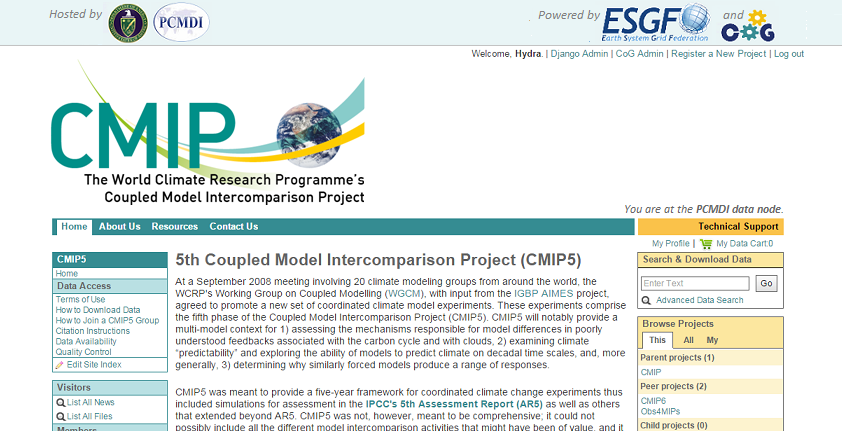
Figure 1. As the official portal for ESGF, the CoG user interface boldly displays the WCRP-CMIP project logo larger than any other logo. At a glance, the user can quickly determine which site they are at for retrieving specific data and site resources (e.g., “Hosted by” in the upper left). In the upper right corner, the website indicates that the infrastructure is “powered by” ESGF and CoG.


Figure 2. Websites that choose to not use CoG and develop their own front-end portal sites but use ESGF as the underlying infrastructure are required to display one of these two logos on the portal webpage. The “powered by” logo can be in the header or footer or both.
Official ESGF and “powered by ESGF” logos can be obtained from the ESGF website: http://esgf.llnl.gov or http://esgf.llnl.gov/logos.html. The official CoG logos can be obtained from the CoG website: https://www.earthsystemcog.org/.

Figure 3. Customizable example of the footer section of the CoG.
The National Aeronautics and Space Administration (NASA) will follow our style guide on the placement of NASA logo and also the footer. An example is shown here: http://cds.nccs.nasa.gov. The NASA logo will appear at both the header and footer. These will frame the CMIP/ESGF in the middle. As a newcomer to ESGF, NASA will follow the Department of Energy’s (DOE’s) decision on where to put CMIP, ESGF, or CoG logos. We intentionally added the footer to follow our own style guide in addition to providing a place for new information.
There are two documents of interest:
The definition of what websites should be included in STRAW includes sites such as ESGF:
“Web sites that have NASA content that is generated, displayed, or disseminated as part of a NASA contract agreement, grant, or other formal agreement with a non-NASA entity. These Web sites will be registered by appropriate NASA officials (e.g., COTRs or Technical Monitors) who are responsible for the relevant content that is displayed on the Web site.”
Logo guidelines:
Banner/footer guidelines:
Co-sponsor logo guidelines:
The DOE logo policy has always been “you know it when you see it”! This means all our DOE laboratory hosted user facility websites must proudly display the DOE Office of Science (SC) logo mark. For anything that is primarily supported by SC, it should have the DOE/SC logo and a link back to the science.energy.gov above the fold. Including a little snippet of text is fine, too, if additional context is warranted.
Specific guidelines:
For more on the use of the SC logo and how it should be displayed, visit: http://science.energy.gov/about/resources/logos/. For information on how to acknowledge SC support, visit: http://science.energy.gov/funding-opportunities/acknowledgements/. Again, we encourage researchers to acknowledge SC support on research products such as ESGF. We may need to make this point more explicit at the above links.
The two relevant National Oceanic and Atmospheric Administration (NOAA) sites are GFDL (an official CMIP site) and ESRL.
Typical findings for today’s ESGF node sites reveal the application logo (e.g., “ESGF”), the sponsor logo (e.g., DOE, NOAA, NASA, IS-ENES), and the institution (or host) logo (e.g., PCMDI, JPL, DKRZ) on the main pages of the sites. Because of the design of the websites and the ability to search and access over 40 projects, individual project logos are not displayed.
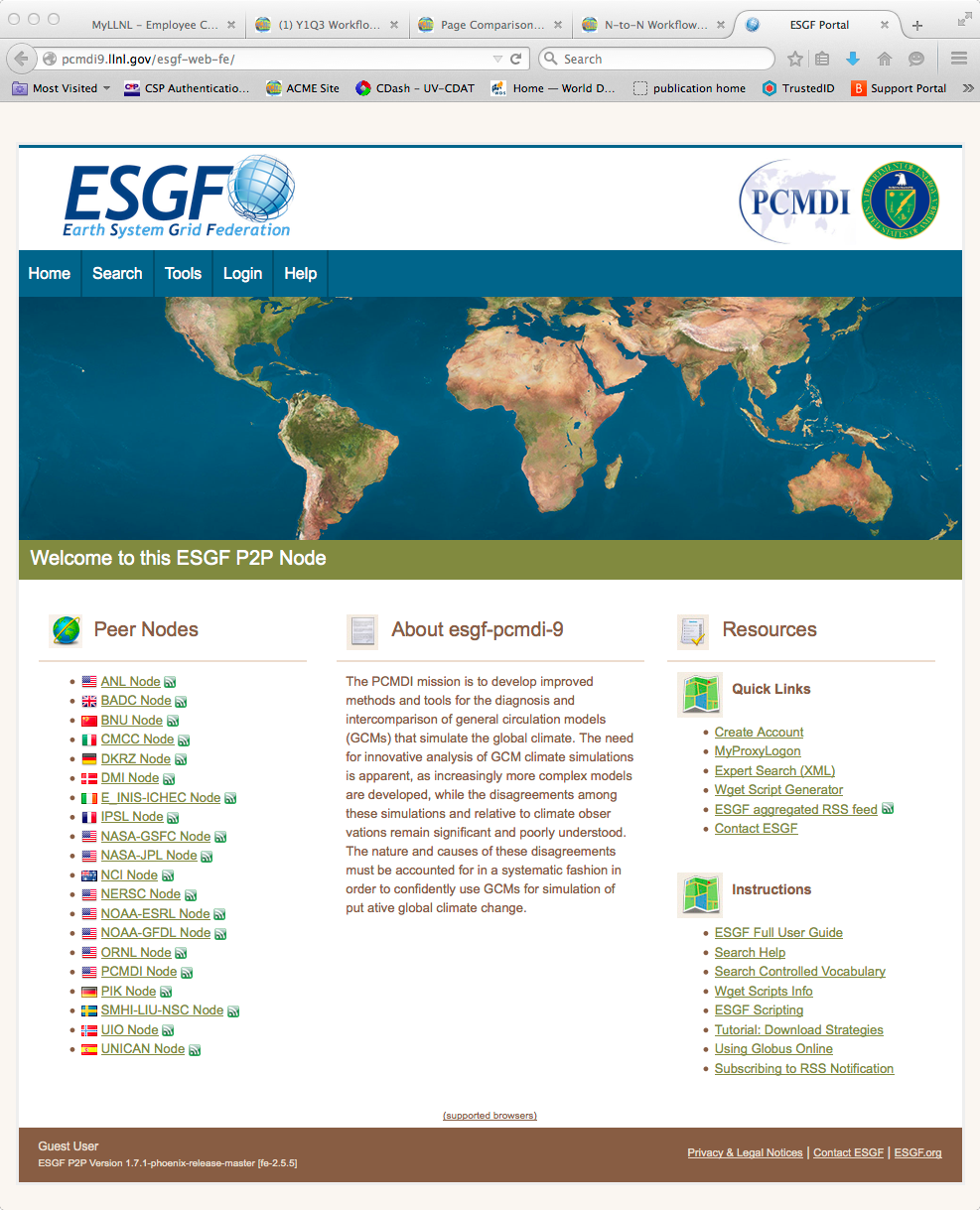
|
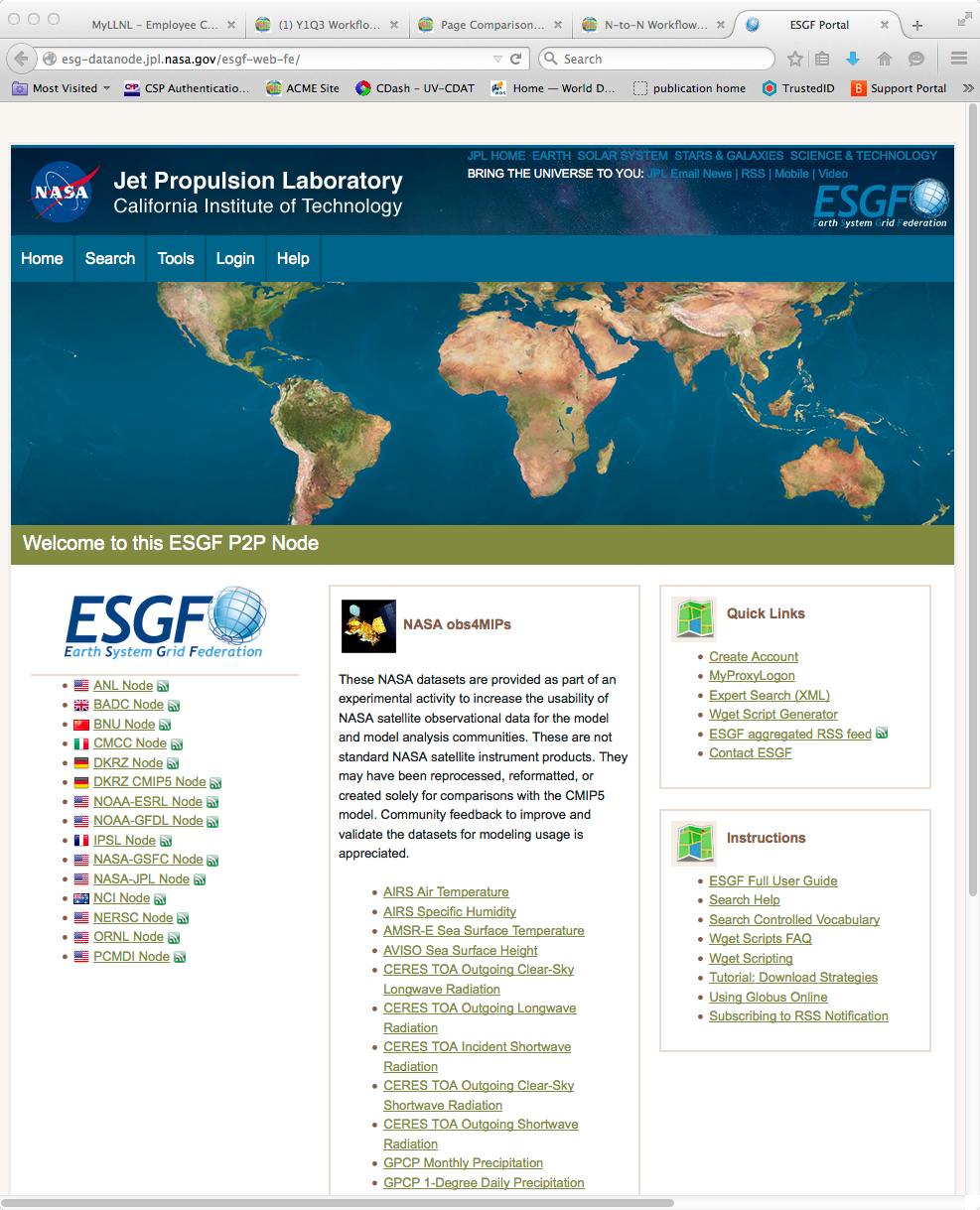
|
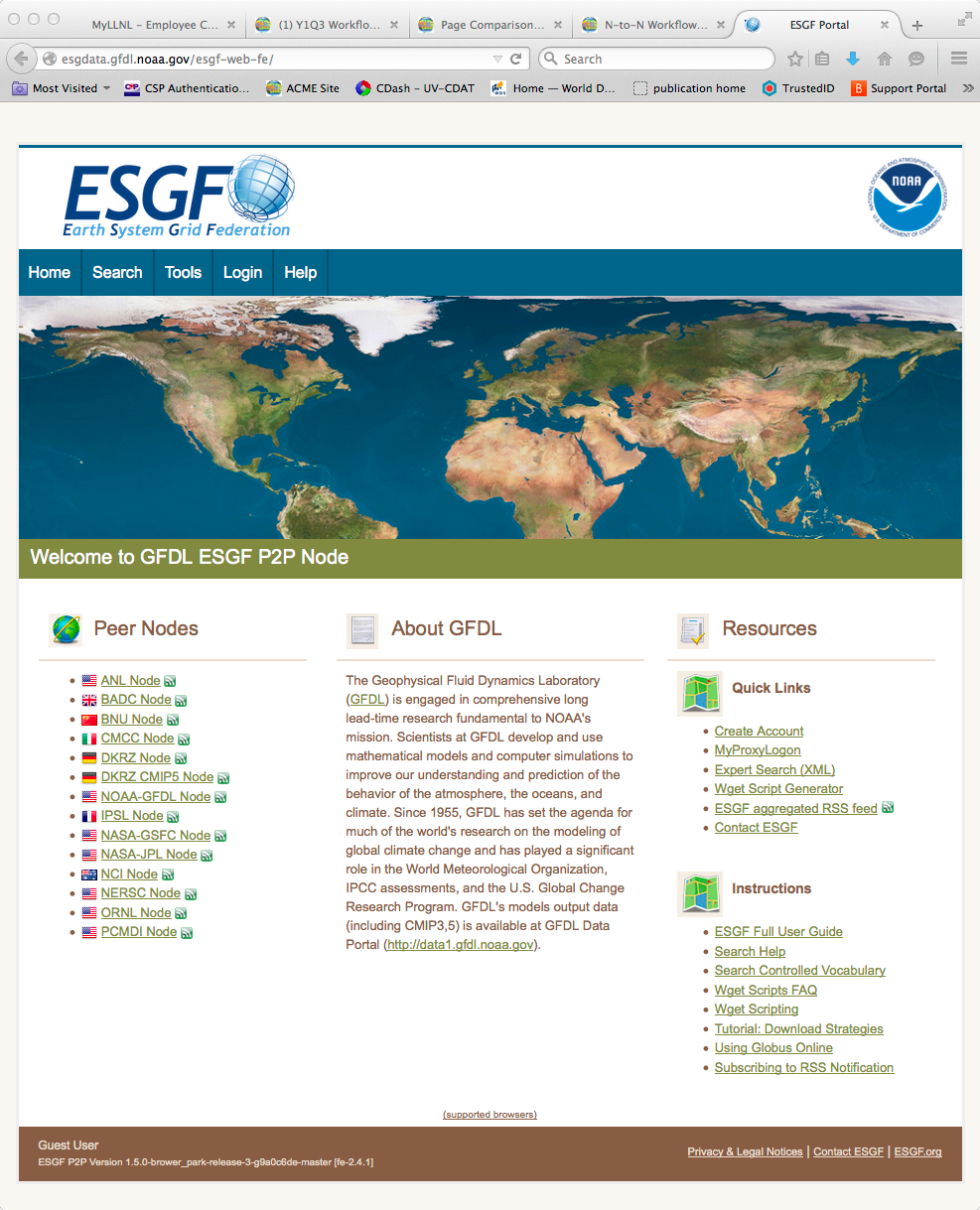
|
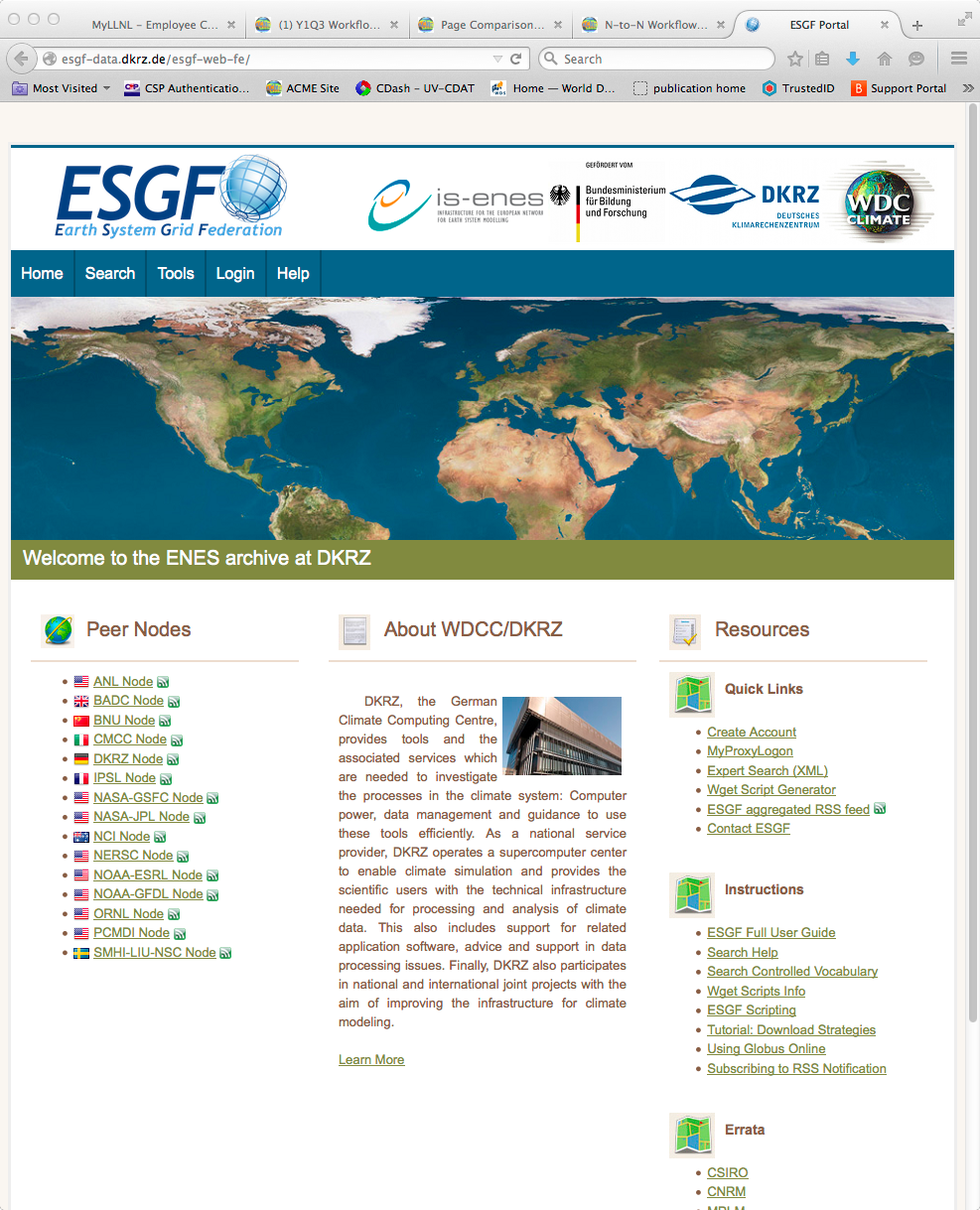
|
| DOE/PCMDI | NASA Node Site | NOAA | IS-ENES/DKRZ |
Foreign node sites pull data from known ESGF official data sites (such as PCMDI and DKRZ ) but do not report back any metrics information or maintain their data (i.e., version control or replication). These data sites display their application logo or name (e.g., Climate Explorer, FetchClimate, Regional Climate Downloader, C2SM) and possibly their organization (KNMI) or sponsor (USGS). Although mainly serving up CMIP data, there is no any mention of the (e.g., WCRP CMIP) project or display of project logos or the ESGF data archive from which they pulled data.

|
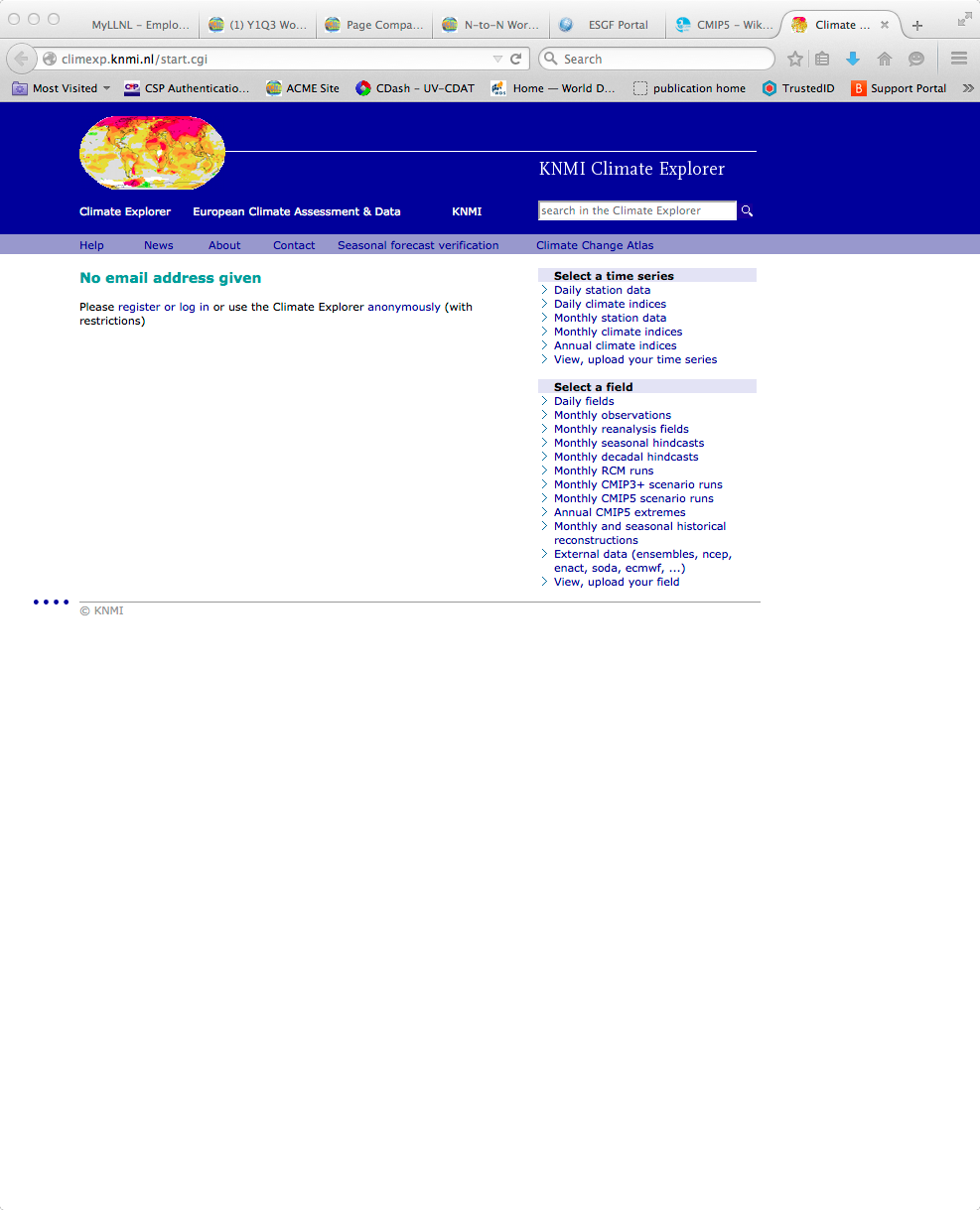
|
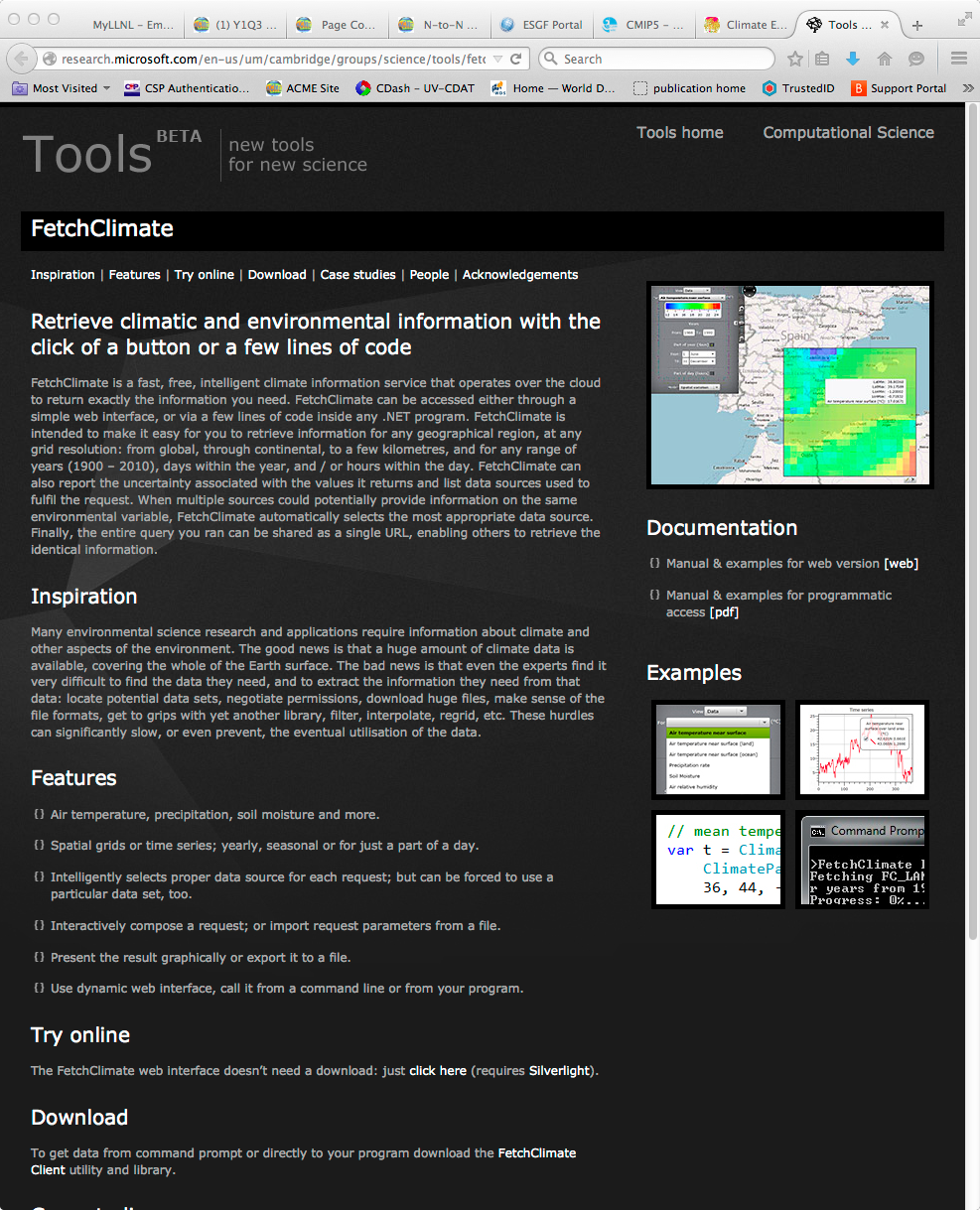
|
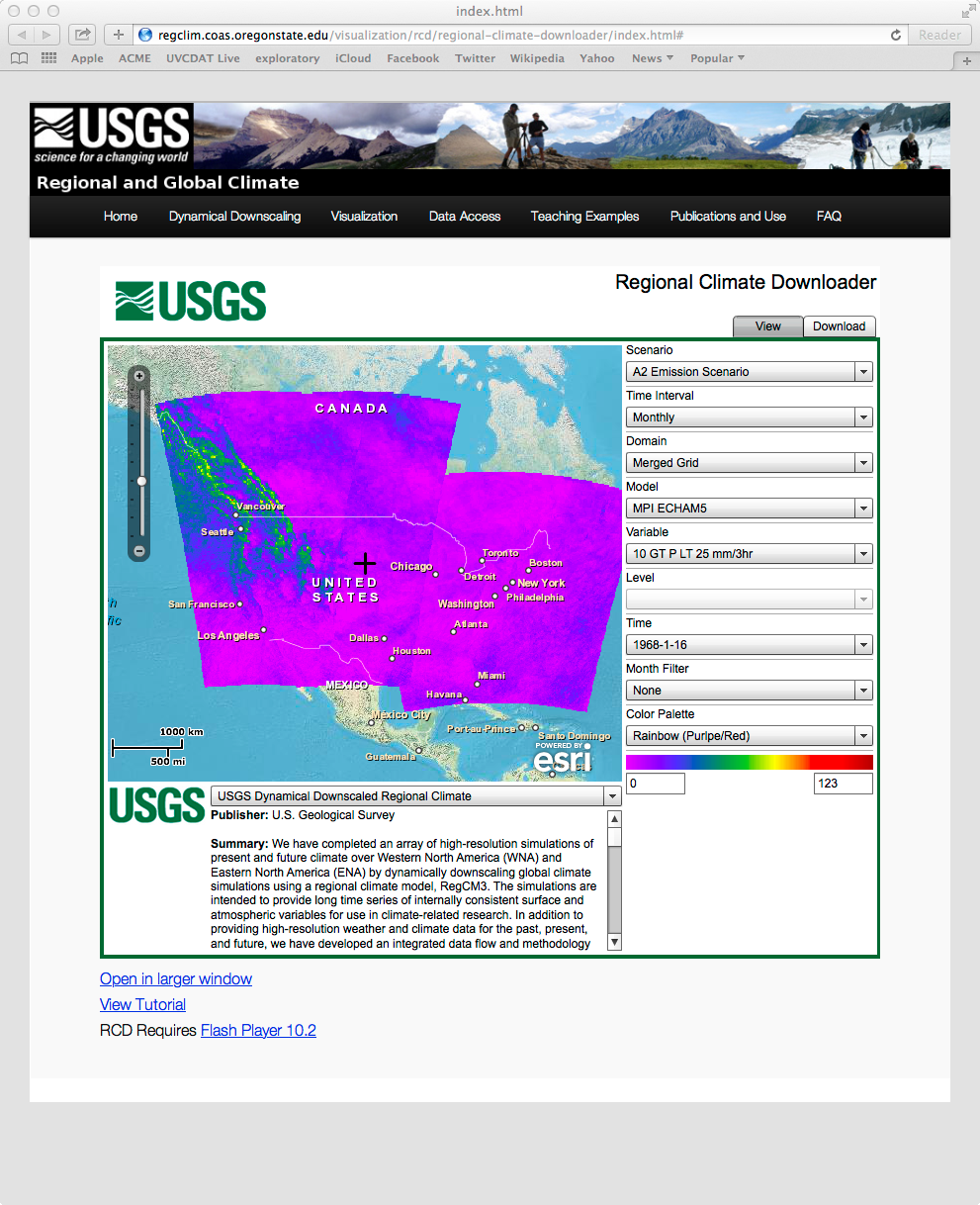
|
| C2SM/ETH | KNMI | FetchClimate | USGS |
Other node sites that pull data directly from ESGF to their portals reveal only their sponsor logo (e.g., IS-ENES) or their application name (Phoenix/Bird-house). These sites are connected to the ESGF infrastructure; however, they do not display any connection to ESGF.
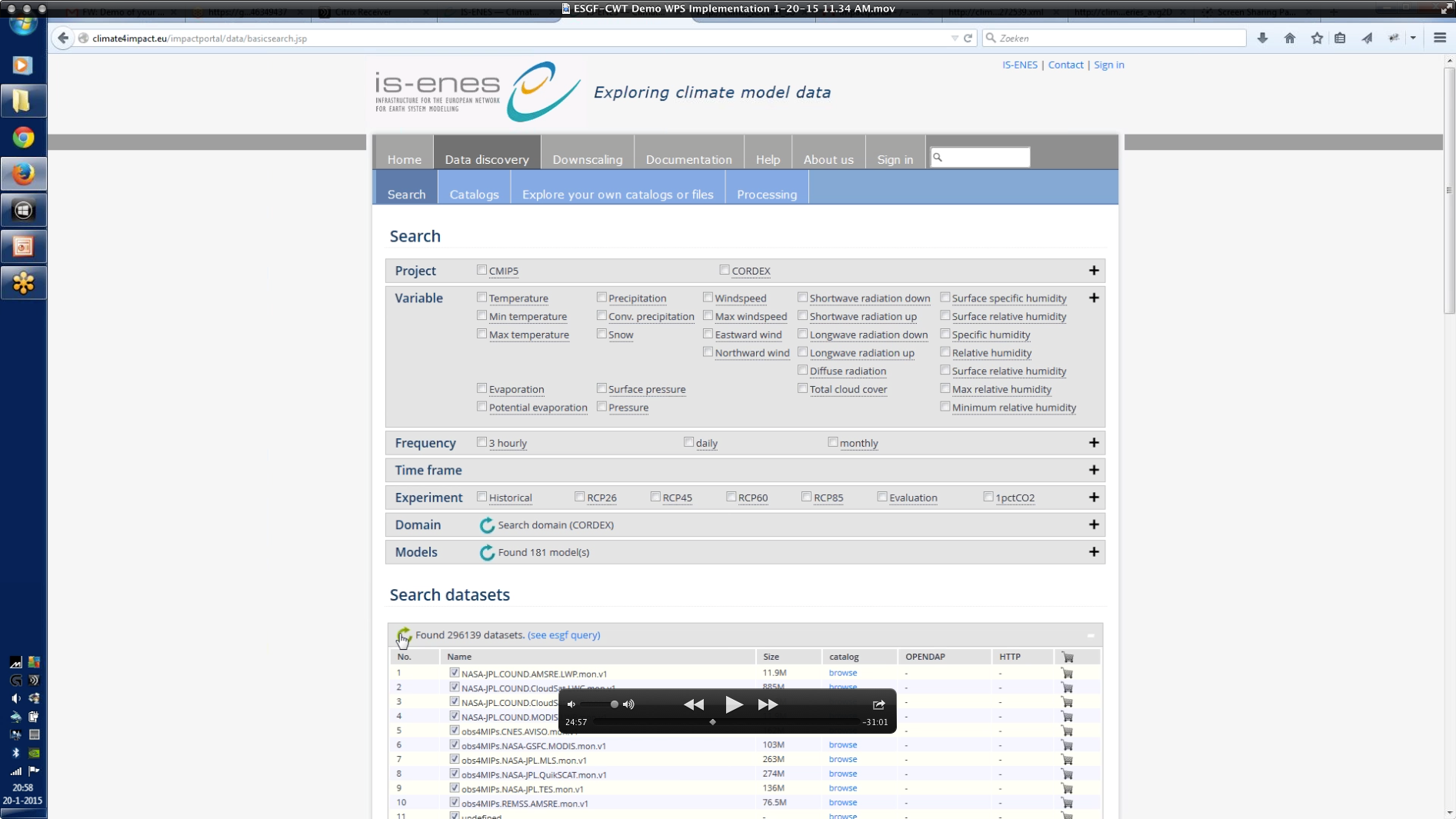
|

|
</tr> |
| IS-ENES2 | Phoenix/Bird-house |